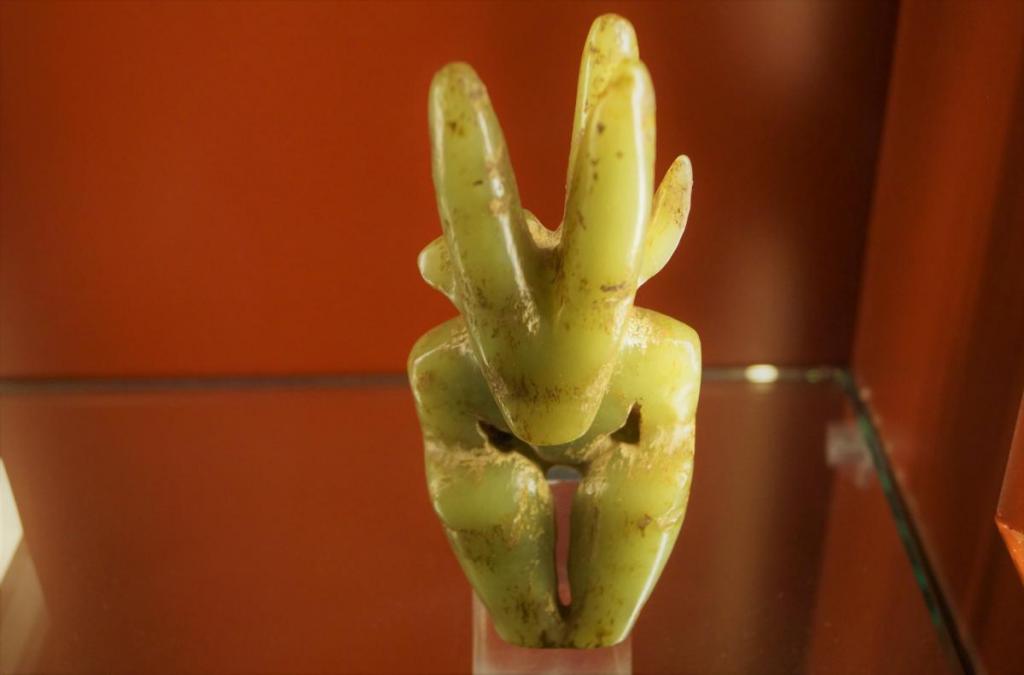China and Jade have been connected since the dawn of time and the Chinese have always considered this wonderful stone “sacred”. There are plenty of stories and legends that have been handed down and from today we will try to tell you a few: this is the first.
"Jade is soft, sweet and shiny to the touch like benevolence. Strong, compact and beautiful like intelligence. Sharp, without being keen, like justice. Bright and shiny, like purity. Its defects are never hidden, like education and sincerity”.

With these words the Chinese philosopher Confucius (551-479 BC) used to described all the virtues of Jade, preaching that a man had to define his way of doing and behavior just according with these virtues.
For the Chinese Jade is evocative of wisdom and sincerity, and gives prosperity, love and long life. It helps to take the reins of one's existence in hand.
Jade has always been considered precious in China: in fact, its name "YU" means "the most precious thing". The name Jade derives, instead, from the Spanish, during the period of the conquest of Central America, where this stone was appreciated and finely worked. They were the ones who christened it "pietra de la ijada", literally "hips stone", for the belief that it cured kidney disease.

Jade origins
In China, 9,000 years ago, jade was seen as the union between the living essences of heaven and earth. It was the earthly embodiment of the male cosmic principle (Yang). Even then it was considered sacred.

While western prehistory is made up of the stone, iron and bronze ages, Chinese prehistory is divided into the age of stone, jade and bronze weapons. In fact, already during the Shang dynasty (16th-11th century BC) and the Zhou dynasty (11th century - 221 BC), sabers and swords were manufactured in Jade and were considered as symbols of human power.
For thousands of years, jade has been the emblem of love, virtue and, at the same time, a social status symbol.
But above all, jade has always been the symbol of the imperial dynasties, the trademark par excellence.
The legend of Bian He and his priceless Jade
In China, the jade "He" is the most famous and a popular legend explains its name.
In 650 BC a man named Bian He, from the state of Chu, observed a phoenix that was perching on a mountain, and convinced himself that there must have been a treasure behind that mountain, given that a famous proverb used to say: "the phoenix only perch on jade stones ".
Indeed, behind the mountain, Bian He found a big piece of raw jade, and being very proud, he decided to take it to his king named "Li". the King, who believed himself a great expert in precious jade, declared that the stone had no value and cut off one of Bian He’s feet to punish him for the disappointment inflicted on him.
Unfortunately, the same happened also with the subsequent king "Wu". Bian He offered his treasure, the king did not consider the stone of value and cut off the other foot.
When the third king Wen ascended the throne, Bian He brought his treasure again, but this time he remained at the gates of the castle, crying for 7 days and 7 nights. Intrigued, the King sent a messenger to find out what was afflicting Bian He so much, believing that the problem was the amputations he had suffered.
Bian He, questioned by the king's messenger, replied that he was not crying for his feet being cut off, but that he was desperate to see that the precious gift he had tried to offer to his King had been considered as a simple stone, and that he, an honest citizen, he had been treated as an imposter.
Then, King Wen decided to have the jade cut, and inside he discovered the most pure jade. As a reward for Bian's wrongs, the jade was called by its name Jade He. Furthermore, for respect of the honor and loyalty shown by Bian He for his king, it was decided to give 16 cities to the state of Chu in exchange for that magnificent treasure.
This legend symbolizes Chinese respect for jade and the concept of loyalty. Bian He does not despair over the amputation of his feet, but for not being believed and for failing to deliver the treasure to the only person who was worthy of it, the emperor.
If you liked this story, stay tuned, because the legend continues. See you next time!








Follow us